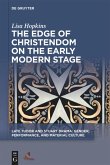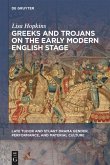The deaths of husbands radically changed women's lives in the early modern period. While losing male protection, widows acquired rare opportunities for social and economic independence. Placed between death and life, female submissiveness and male audacity, chastity and sexual awareness, or tragedy and comedy, widows were highly problematic in early modern patriarchal society. They were also popular figures in the theatre, arousing both male desire and anxiety. Now how did Shakespeare and his contemporaries represent them on the stage? What kind of costume, props, and gestures were employed? What influence did actors, spectators, and play-space have? This book offers a fresh and incisive examination of the theatrical representation of widows by discussing the material conditions of the early modern stage. It is also the only comprehensive study of this topic covering all three phases of Elizabethan, Jacobean, and Caroline drama.
Hinweis: Dieser Artikel kann nur an eine deutsche Lieferadresse ausgeliefert werden.
Hinweis: Dieser Artikel kann nur an eine deutsche Lieferadresse ausgeliefert werden.








